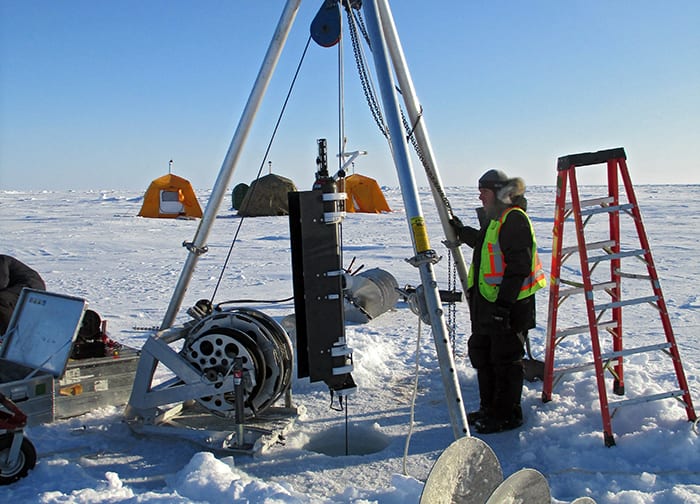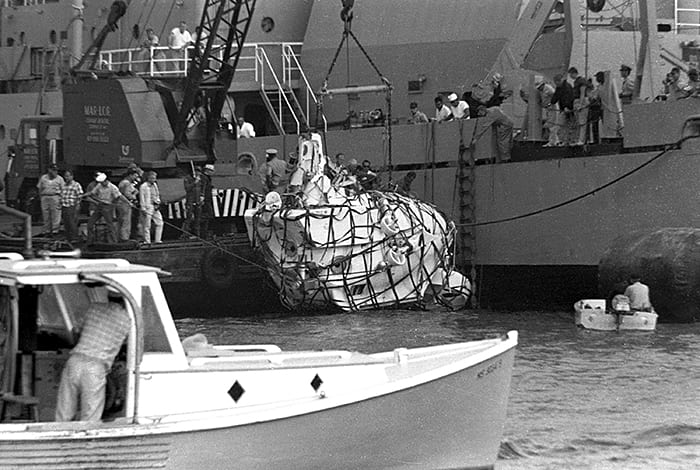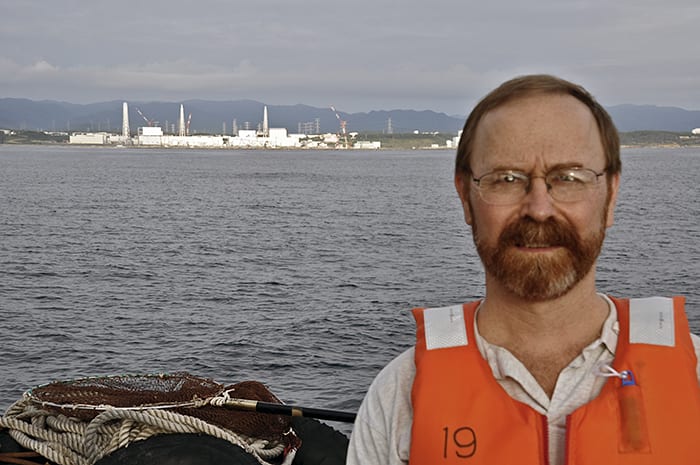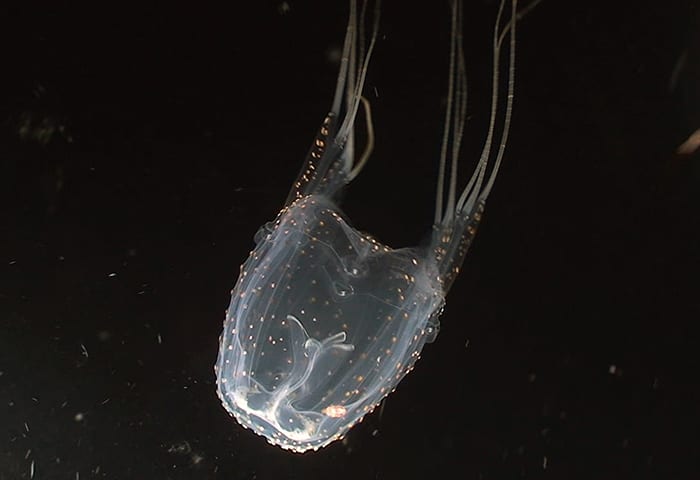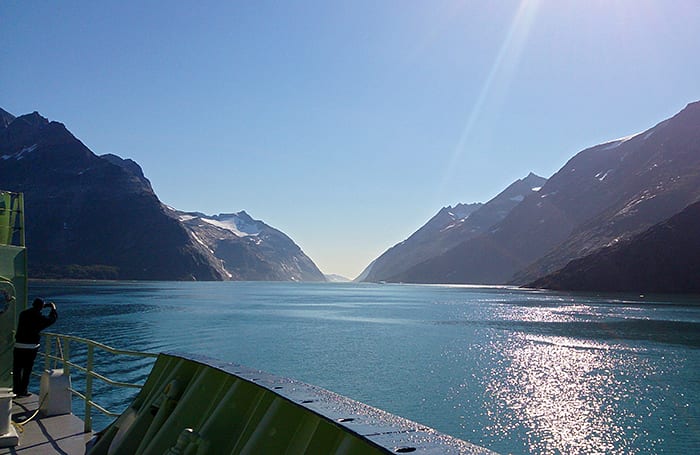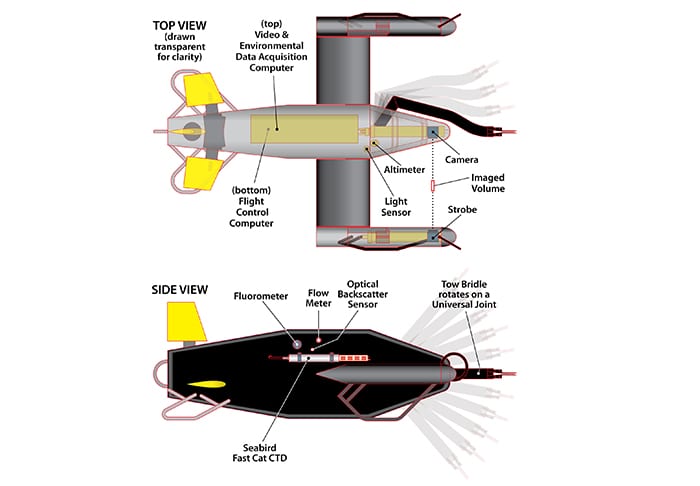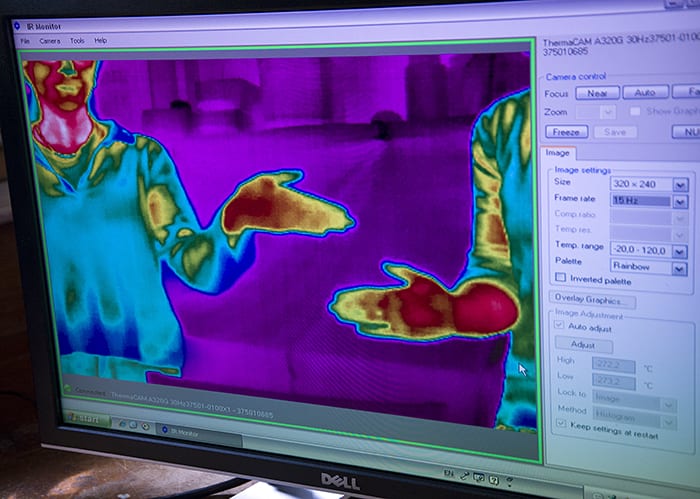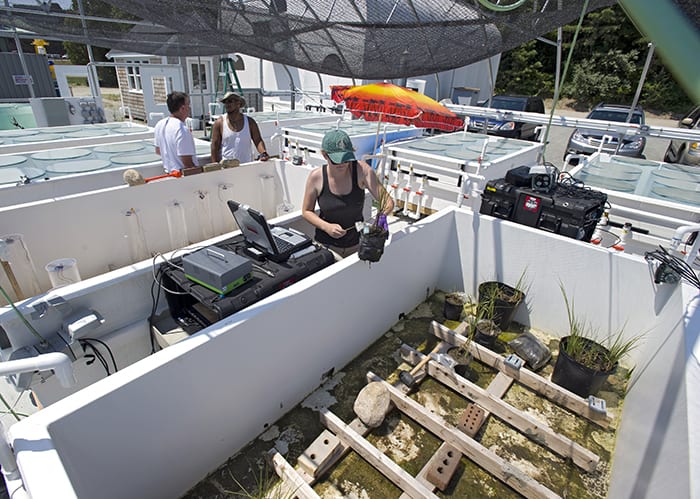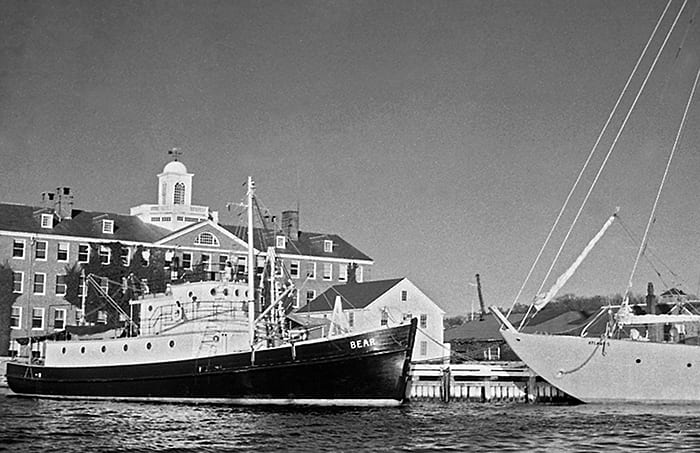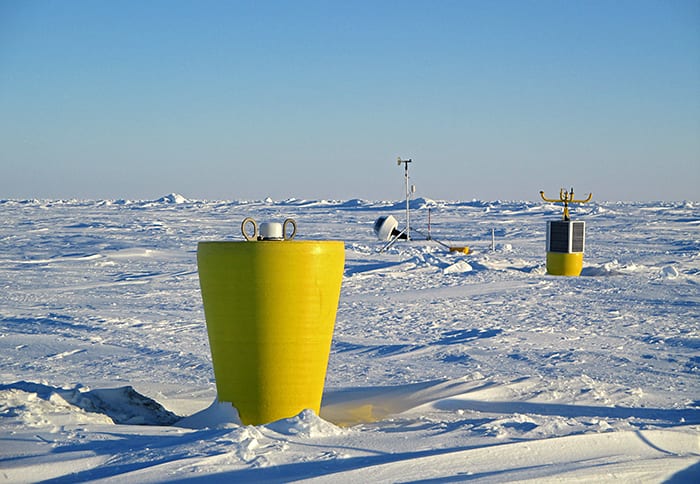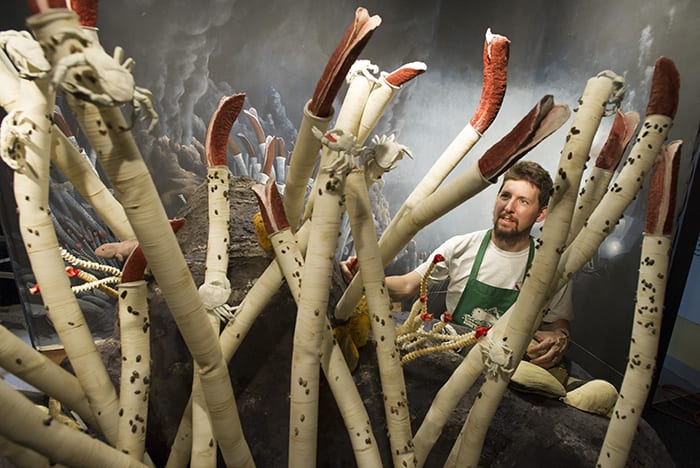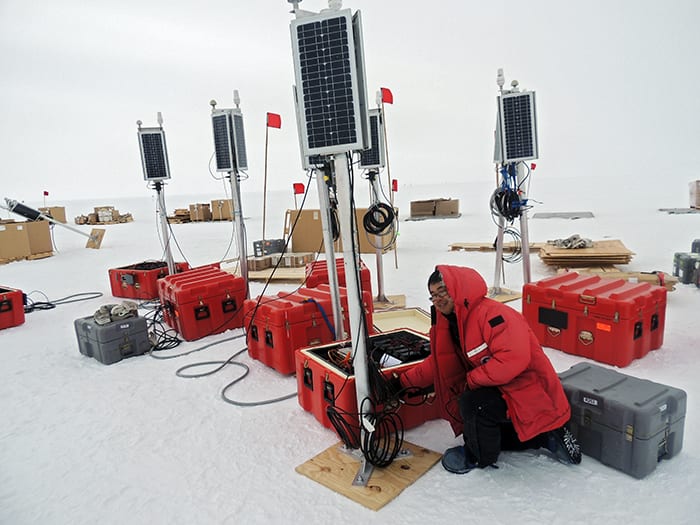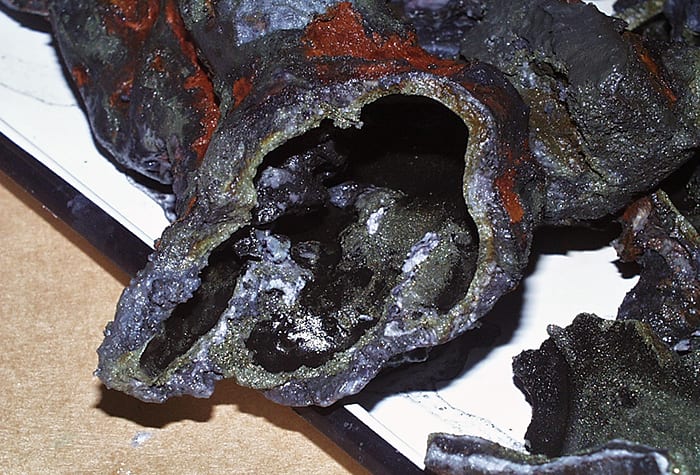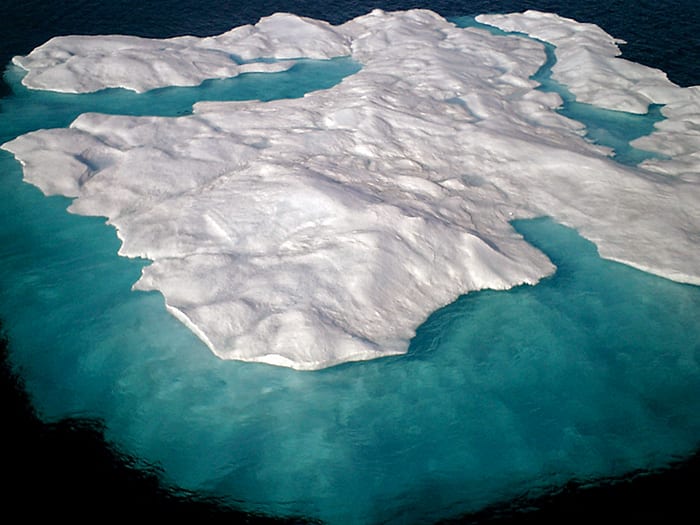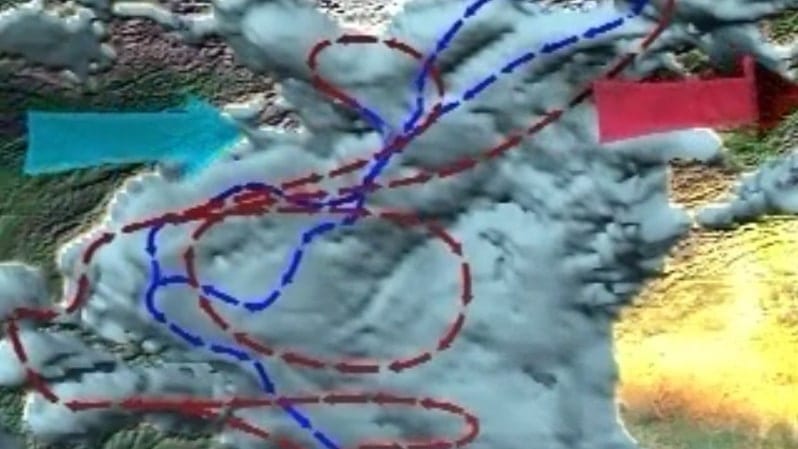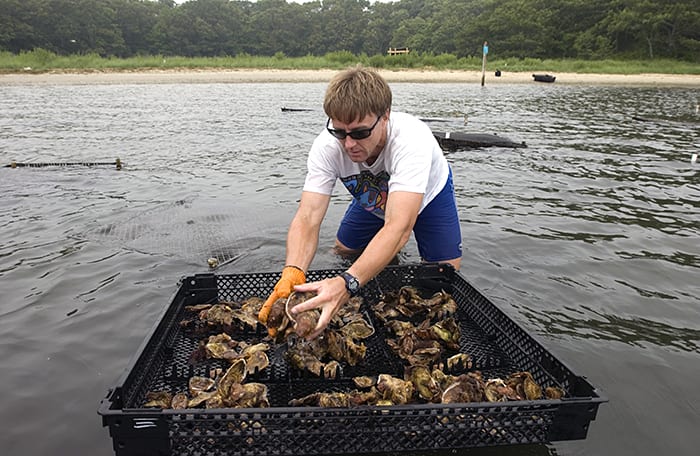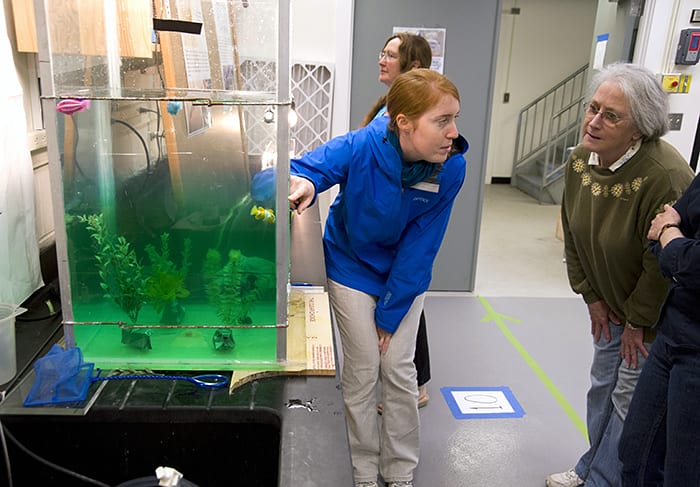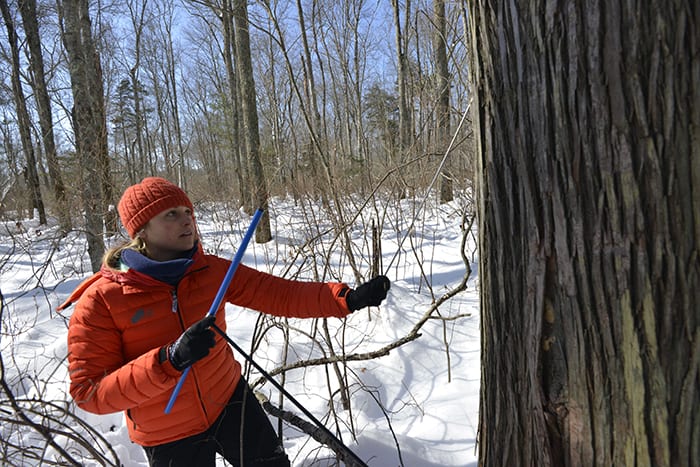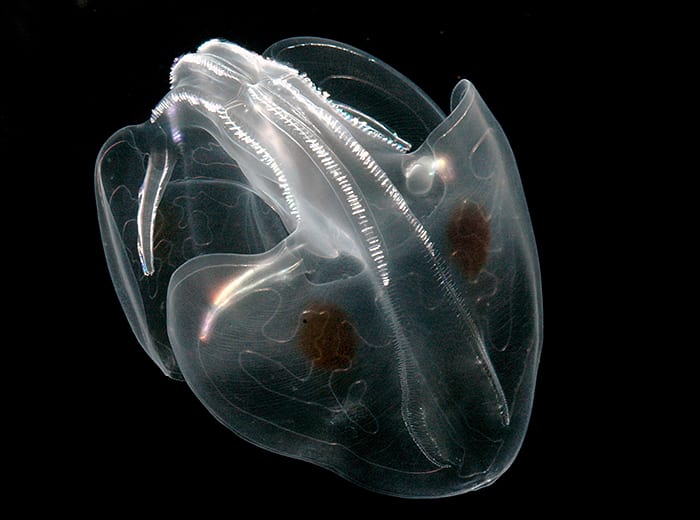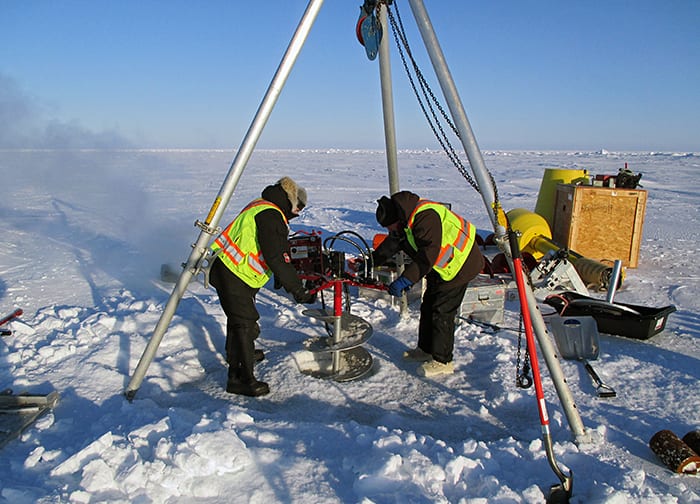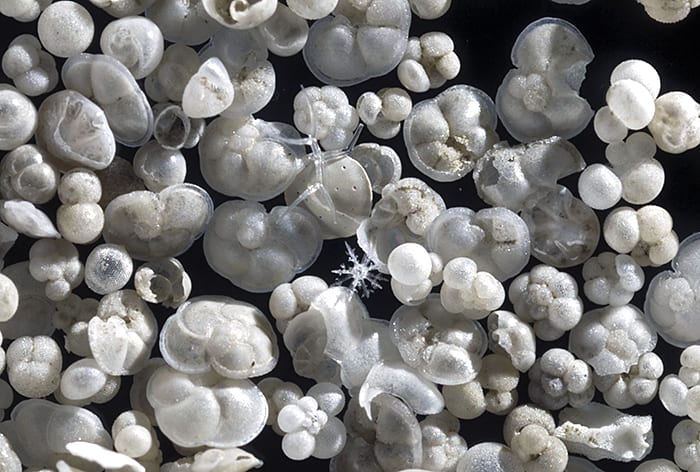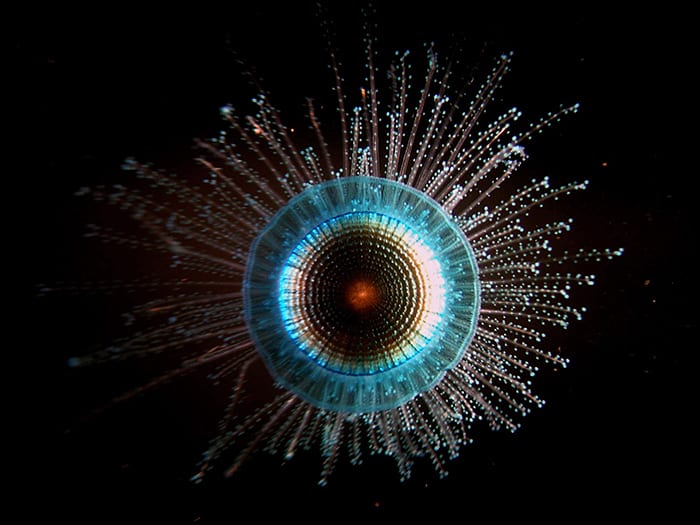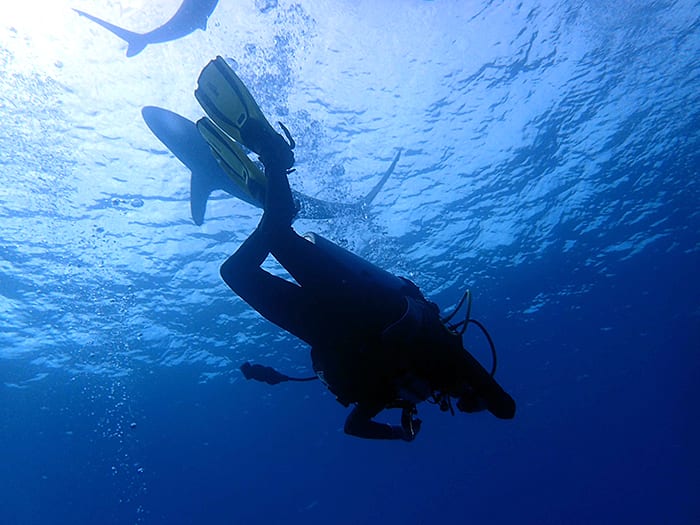Multimedia Items
Ice Cold
The temperature was -39°F when WHOI engineers John Kemp and Kris Newhall (pictured) and colleagues set up camp on a Beaufort Sea ice floe in March 2014. They were there…
Read MoreAlvin Rising
On October 16, 1968, at the beginning of Dive 308, two steel cables supporting Alvin‘s lowering cage parted. The sub plunged about 15 feet (4.5 meters), then bobbed to the…
Read MoreFour Years On
In March 2011 one of the largest earthquakes ever recorded shook Japan, creating a tsunami that damaged the Fukushima Dai-ichi nuclear power plant and resulted in the largest unintentional release…
Read MoreNight Watcher
In 2006 MIT-WHOI Joint Program student Kelly Rakow Sutherland, who studied zooplankton at the Liquid Jungle Lab in Panama, photographed this box jellyfish while on a night scuba dive. Soft-bodied…
Read MoreTight Squeeze
In August 2014, R/V Knorr transited through Prince Christian Sound, a 60-mile (100-kilometer) strait in southern Greenland that narrows in places to only 1,500 feet (500 meters). The sound connects the…
Read MoreUndersea Telescope
This stealthy-looking vehicle is a VPR, or Video Plankton Recorder, which images plankton and particles as it is towed through the water while software on the ship automatically identifies the organisms…
Read MoreRevealed Warmth
At an open house that she hosted in the WHOI Geophysical Fluid Dynamics (GFD) Laboratory, scientist Claudia Cenedese invited visitors to have their portrait taken with a thermal-imaging camera, which…
Read MoreNature in Miniature
The Mesocosm Lab at WHOI is a unique facility that gives scientists the ability to set up realistic natural environments, but on a smaller scale. An underground system draws seawater…
Read MoreFrom the Archives
Research vessels Bear and Atlantis docked at the WHOI pier in 1955. Built during WWII as a troop carrier in the South Pacific, Bear was chartered by the Institution in…
Read MoreTip of the Profiler
Below this buoy drifting atop an ice floe hangs the rest of an instrument called an Ice-Tethered Profiler (ITP). The instrument, developed at WHOI, has a motorized device that rides up…
Read MoreVisit a Vent
Exhibit preparator Sean Murtha installs a new exhibit at the Ocean Science Exhibit Center entitled The Deep Sea. The exhibit was orginally displayed at the Bruce Museum in Greenwich, Conn., and replicates…
Read MoreEverything Must Go
Chen Cai, a graduate student at Washington University in St. Louis organizes one of the 16 seismic stations that a team led partly by WHOI geophysicist Ralph Stephen set up…
Read MoreTreasure of Information
A rock sample, collected from the Central Indian Ridge, a mountain chain running through the Indian Ocean, sparkles with information. It’s interior is lined with a fine-grained mineral called chalcopyrite as…
Read MoreNo Swimming
A floating piece of ice in the Arctic Ocean matches the shades of white-sand beaches in tropical water, but the temperature would be quite a shock to anyone who was…
Read MorePropelled by the Sinking of Cold, Salty waters
The Great Ocean Conveyor is propelled by the sinking of cold, salty (and therefore denser) waters in the North Atlantic Ocean (blue arrows). That creates a void that pulls warm,…
Read MoreOysters to the Rescue
Excess nitrogen and other nutrients in coastal waters on Cape Cod can lead to algal blooms that deplete oxygen and disturb natural ecosystems. Hauke Kite-Powell is a WHOI Marine Policy Center research…
Read MoreMixing it Up
In WHOI’s Geophysical Fluid Dynamics Laboratory (GFD), scientists study small versions of ocean currents, eddies, and flows. Scientist Claudia Cenedese and graduate students in the Physical Oceanography Department held public…
Read MoreTreecicles
MIT-WHOI Joint Program graduate student Jessie Pearl led a team into the Acushnet Cedar Swamp State Reservation in New Bedford, Mass., recently in search of white cedar trees from which…
Read MorePredator Made of Jelly
Ocean plankton ranges in size from tiny plant-like cells to gelatinous animals that can be almost as long as a bus but with soft, jelly-like bodies. This comb jelly, Ocyropsis…
Read MoreNo Holiday On Ice
It was -22°F in March 2014 when WHOI engineers Kris Newhall (left) and John Kemp landed in a Twin Otter aircraft on an ice floe in the Beaufort Sea. They were…
Read MoreTiny Time Machines
Seafloor sediments are full of tiny shells like these, the remains of single-celled ocean organisms that lived, died, and sank to the ocean bottom, building up in layers over the…
Read MoreBlue Button Drifter
Porpita porpita, also called the blue button jelly, floats at or near the surface of the water and drifts with the wind. This flower-like floater, related to jellyfish, is actually…
Read MoreSharing the Ocean
MIT-WHOI Joint Program graduate student Laura Weber swims past a Caribbean reef shark while working in the Jardines de la Reina (Gardens of the Queens) archipelago in Cuba. She and…
Read MoreFrom the Archives
The original personnel sphere of the human-occupied vehicle Alvin was shaped from a steel plate in 1964 at Lukens Steel Co. in Coatesville, Pennsylvania. That sphere was used until 1973, when engineers…
Read More
